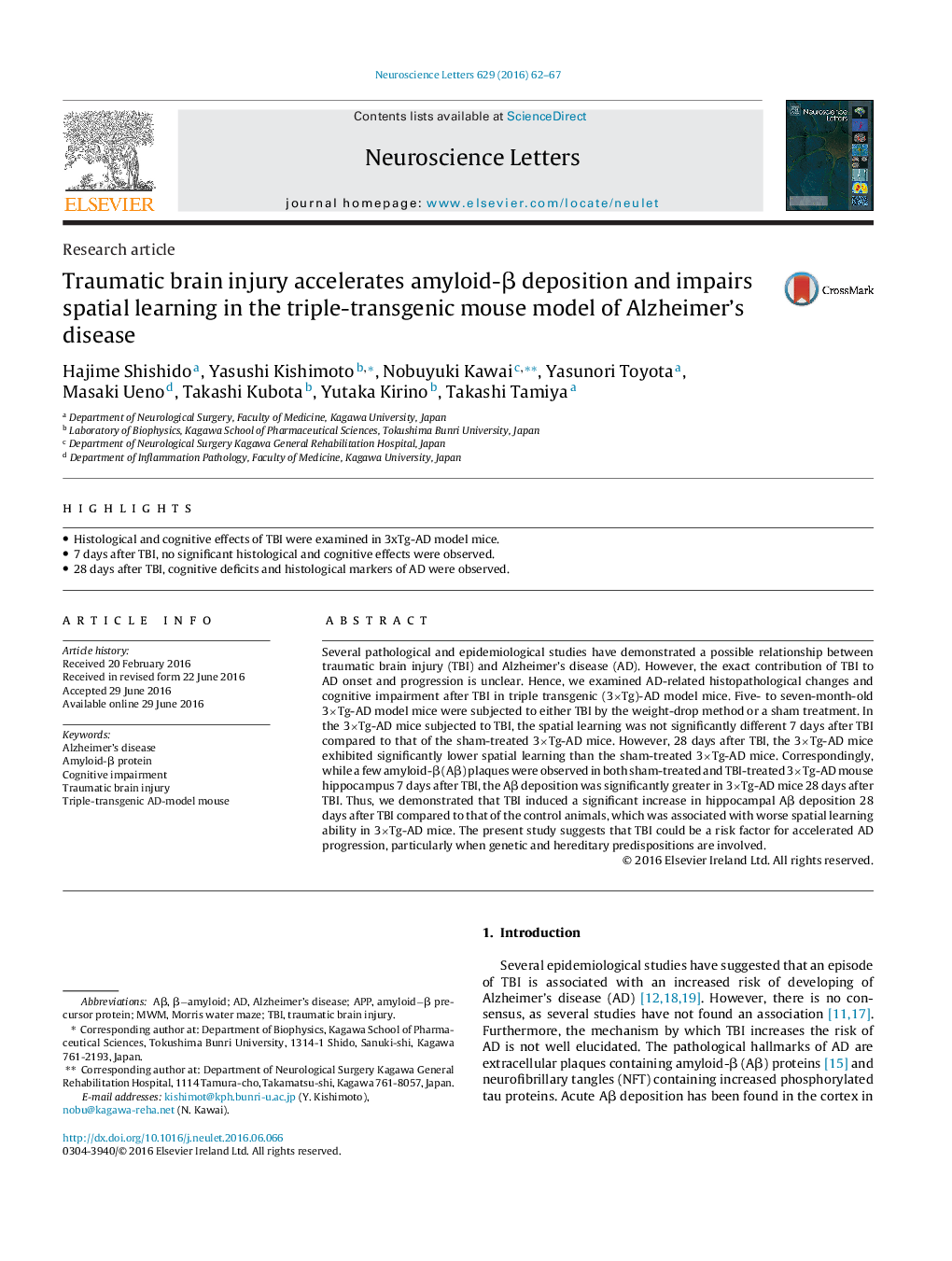| Article ID | Journal | Published Year | Pages | File Type |
|---|---|---|---|---|
| 4343213 | Neuroscience Letters | 2016 | 6 Pages |
•Histological and cognitive effects of TBI were examined in 3xTg-AD model mice.•7 days after TBI, no significant histological and cognitive effects were observed.•28 days after TBI, cognitive deficits and histological markers of AD were observed.
Several pathological and epidemiological studies have demonstrated a possible relationship between traumatic brain injury (TBI) and Alzheimer’s disease (AD). However, the exact contribution of TBI to AD onset and progression is unclear. Hence, we examined AD-related histopathological changes and cognitive impairment after TBI in triple transgenic (3×Tg)-AD model mice. Five- to seven-month-old 3×Tg-AD model mice were subjected to either TBI by the weight-drop method or a sham treatment. In the 3×Tg-AD mice subjected to TBI, the spatial learning was not significantly different 7 days after TBI compared to that of the sham-treated 3×Tg-AD mice. However, 28 days after TBI, the 3×Tg-AD mice exhibited significantly lower spatial learning than the sham-treated 3×Tg-AD mice. Correspondingly, while a few amyloid-β (Aβ) plaques were observed in both sham-treated and TBI-treated 3×Tg-AD mouse hippocampus 7 days after TBI, the Aβ deposition was significantly greater in 3×Tg-AD mice 28 days after TBI. Thus, we demonstrated that TBI induced a significant increase in hippocampal Aβ deposition 28 days after TBI compared to that of the control animals, which was associated with worse spatial learning ability in 3×Tg-AD mice. The present study suggests that TBI could be a risk factor for accelerated AD progression, particularly when genetic and hereditary predispositions are involved.
